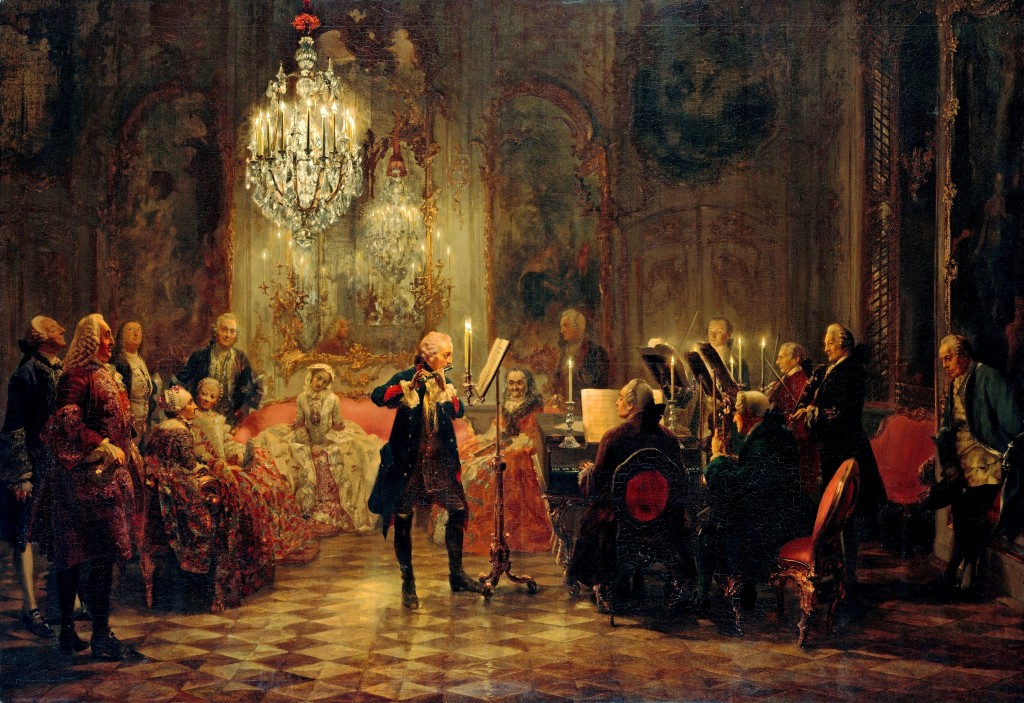C.P.E. Bach, Rondo in E-flat, Wq 61/1 (H. 288)
Carl Philipp Emanuel Bach (1714-1788), the fifth child of J.S. Bach, was named after the composer George Philipp Telemann, the elder Bach’s friend and godfather to C.P.E. C.P.E. would become much more widely celebrated in his lifetime than his father. The elder Bach was taking the old (and fading) Baroque style to new heights while his sons, particularly C.P.E. and Johann Christian, were working in newer styles. C.P.E. would secure a position of great importance with Frederick the Great, an accomplished musician, and later succeed Telemann as Kapellmeister in Hamburg.
 The famous painting by Adolph von Menzel showing Frederick the Great playing flute in the music room at Sanssouci also shows C.P.E. at the harpsichord. (You may have noticed this painting on our home page.)
The famous painting by Adolph von Menzel showing Frederick the Great playing flute in the music room at Sanssouci also shows C.P.E. at the harpsichord. (You may have noticed this painting on our home page.)
C.P.E. wrote extensively for the clavichord, a keyboard instrument with a rather long history dating back to the 15th century. It had several advantages over the harpsichord and organ. It was small and portable. And the amount of force used in striking the keys controlled the dynamics. With a harpsichord or organ, you get the same sound no matter how hard or soft you depress the key. The disadvantage of the clavichord was its small sound. It was a very quiet instrument suitable for practicing and for very small gatherings.

It is worth taking a look at the action of the clavichord shown in the diagram. When the key (A) is depressed, a tangent (1A) strikes the string (3). The pitch is determined be the length of the string between the tangent and the bridge (5). So it is possible to have multiple pitches assigned to the same string (e.g. tangents 1A and 1B). The string continues to vibrate as long as the tangent remains in contact with the string. When the key is released, the felt dampers (6) silence the string.
You may notice in the recording that the performer occasionally appears to be using vibrato on the keys, something that would have no effect with most keyboard instruments. But because the tangent controls the pitch and is linked directly to the key, the performer can produce a very slight pitch variation (called Bebung) with this hand motion.
Professor Carol’s short demonstration of the clavichord appears at the end of her vignette filmed at the palace in Köthen, one of the stations of J.S. Bach.



